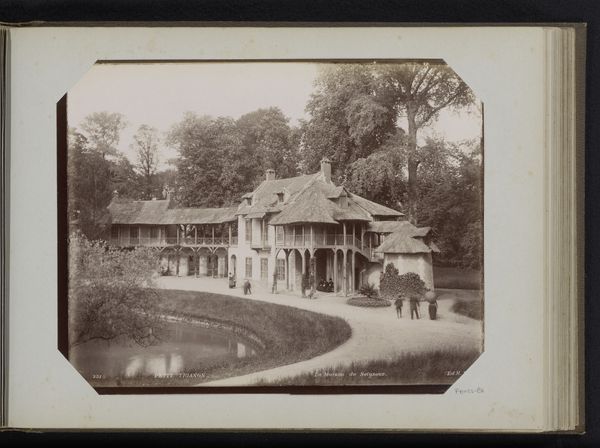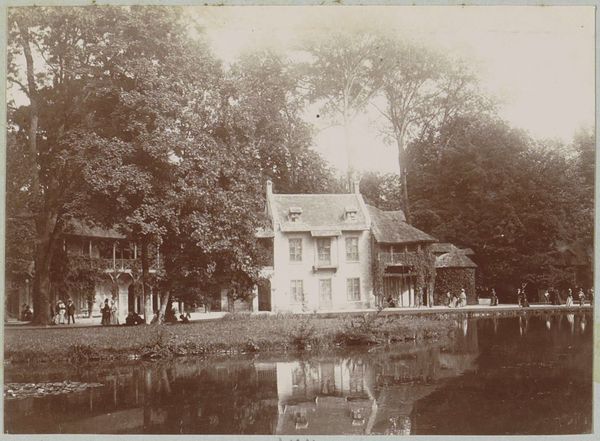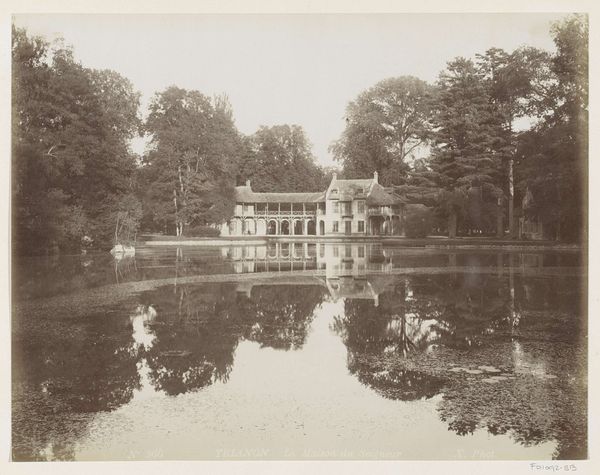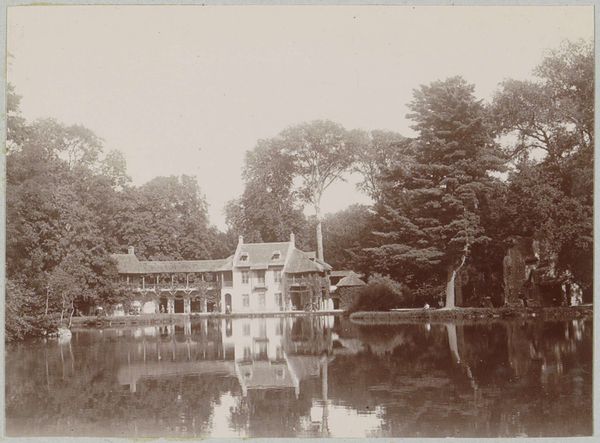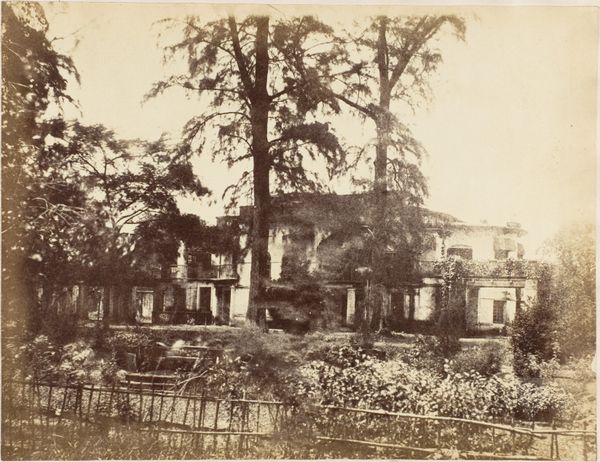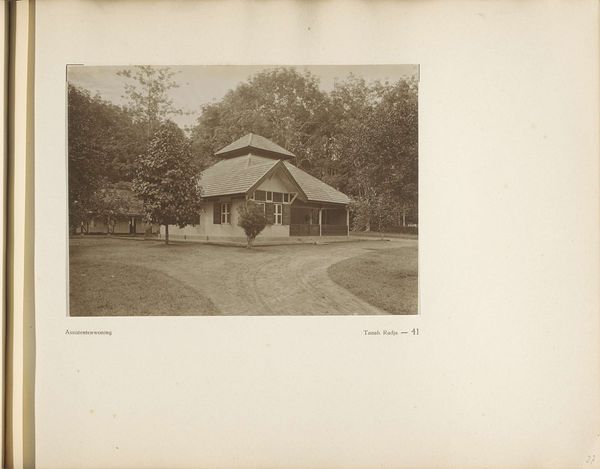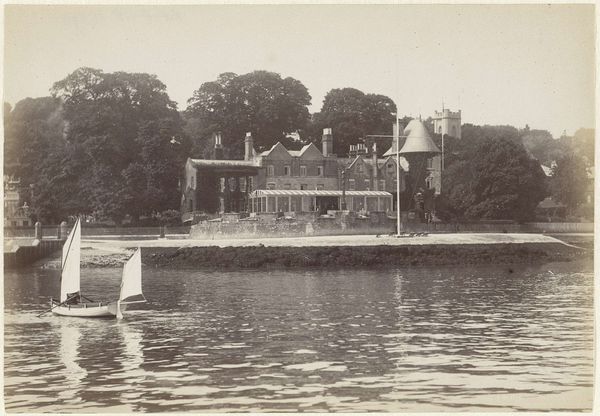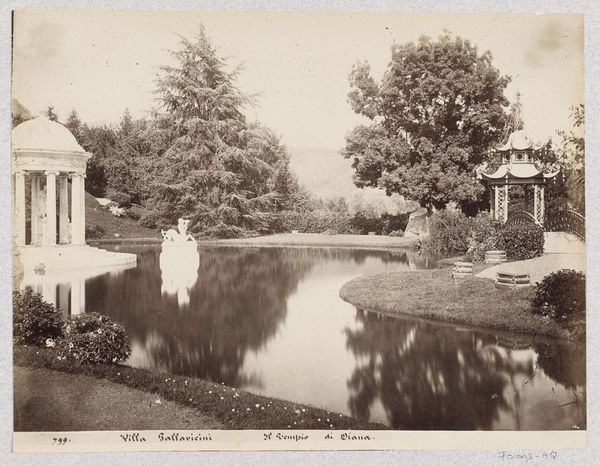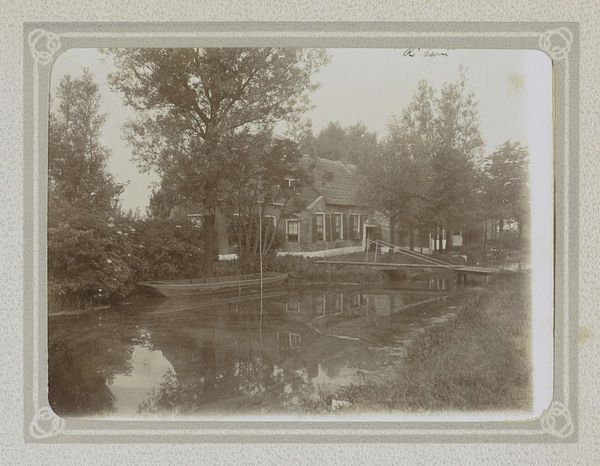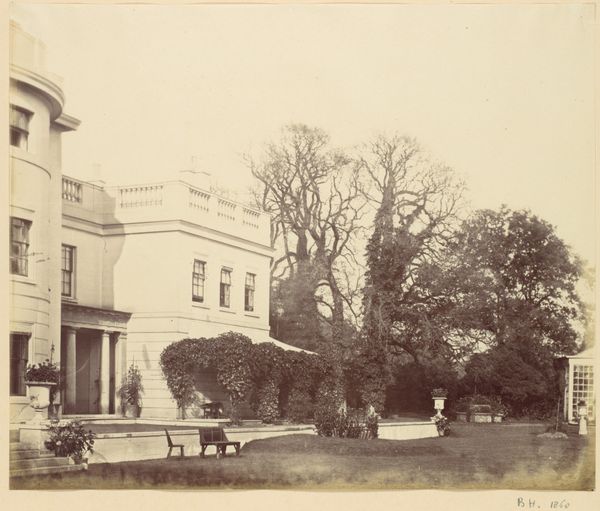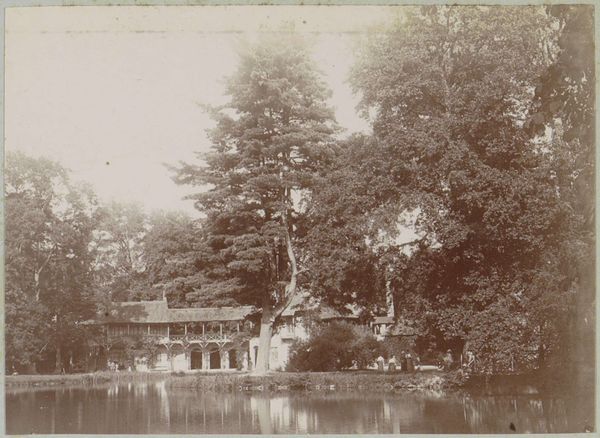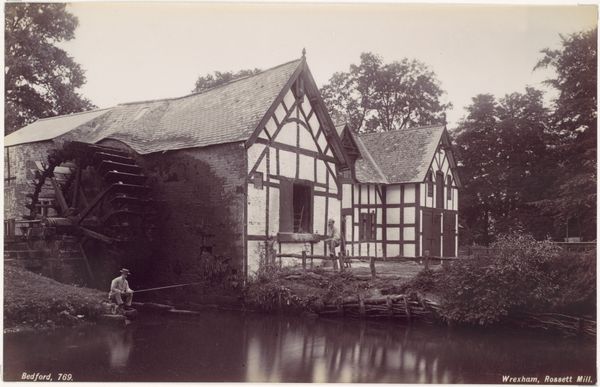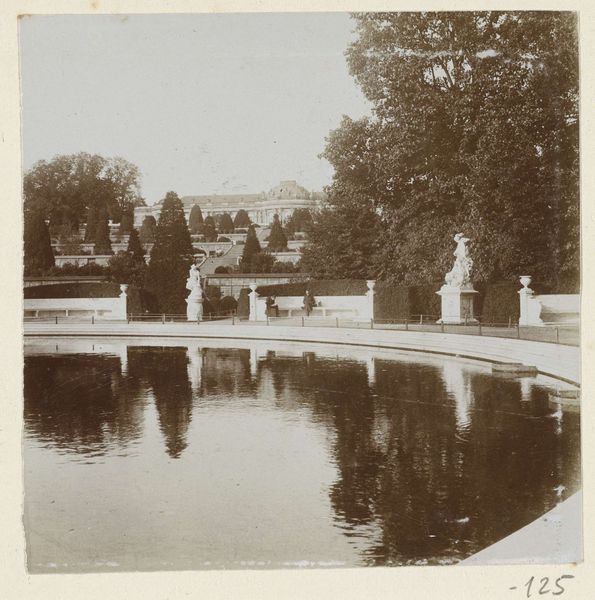
Dimensions: height 200 mm, width 281 mm, height 305 mm, width 405 mm
Copyright: Rijks Museum: Open Domain
Curator: Before us we have a photograph titled "Maison du Seigneur bij het Klein Trianon in de tuinen van Versailles" by X phot., likely taken between 1887 and 1900. Editor: My immediate response is one of stillness. The sepia tones lend a certain melancholy, and the reflection in the water doubles that sense of quietude. It feels almost staged, perfectly poised. Curator: Indeed. The photograph's composition directs the eye methodically: the gentle curve of the pond in the foreground leads towards the architectural structure, its form being mirrored perfectly in the water. It is a superb manipulation of form. Editor: Yet, who lived there? How did their lived experiences shape the gardens? How do those social markers influence our interpretation now? I wonder, does the apparent tranquility belie a history of privilege and exclusion? What of the unacknowledged labour behind such elaborate displays of wealth? Curator: From a formal standpoint, we can examine the interplay between the soft, organic shapes of the trees and the rigid, geometric forms of the building. The photographer plays with light and shadow, highlighting the texture of the thatched roof. The use of timber and the veranda-style architecture introduces an element of rusticity. Editor: This is where form intersects with the cultural and social—the *idea* of rusticity was idealized amongst the elite. Consider Marie Antoinette’s hamlet: How was "nature" aestheticized? What societal narratives did these built environments reinforce about the social hierarchy? What messages about class, gender, and race were implicit? Curator: To look closer at this through its aesthetic merits, we can acknowledge that the photograph displays incredible depth, especially considering the limitations of photography at the time. This visual complexity speaks to the artistic merit regardless of its historical implications. Editor: Yes, and those formal choices—the framing, the light—serve specific narratives that both reflect and reinforce those times, too. Curator: Considering this interplay enriches our analysis, doesn't it? Editor: Absolutely. We’ve barely scratched the surface regarding Versailles, I hope this prompts others to look deeper.
Comments
No comments
Be the first to comment and join the conversation on the ultimate creative platform.
